

Articles
How To Store Asparagus
Modified: February 24, 2024
Learn the best techniques for storing asparagus to keep it fresh and flavorful. Read our informative articles for expert tips on asparagus storage.
(Many of the links in this article redirect to a specific reviewed product. Your purchase of these products through affiliate links helps to generate commission for Storables.com, at no extra cost. Learn more)
Introduction
Asparagus is a delicious and nutritious vegetable that is enjoyed by many people around the world. However, it can be quite perishable, and if not stored properly, it can quickly lose its flavor and freshness. Whether you have bought a bunch of asparagus from the grocery store or harvested it from your own garden, knowing how to store asparagus is key to preserving its quality and prolonging its shelf life.
In this article, we will explore different methods for storing asparagus to maximize its freshness. We will discuss options for storing asparagus in the refrigerator, as well as how to freeze it for longer-term storage. We will also share expert tips on how to select and prepare asparagus, so you can ensure that it stays fresh and delicious for as long as possible.
So, whether you plan to enjoy the asparagus in a salad, sauté it as a side dish, or include it in a recipe, read on to discover the best practices for storing asparagus and keeping it in prime condition.
Key Takeaways:
- Properly storing asparagus in the refrigerator, freezer, or vacuum-sealed can extend its shelf life and preserve its flavor, allowing you to enjoy this nutritious vegetable year-round.
- Selecting high-quality asparagus, trimming it properly, and following expert storage tips can help maintain its freshness and ensure delicious, crisp asparagus for your meals.
Read more: How To Store Cooked Asparagus
Choosing and Preparing Asparagus
When it comes to selecting asparagus, there are a few key factors to consider. Look for firm and straight stalks with tightly closed tips. Avoid any stalks that have wilted or mushy sections, as this is a sign of spoilage.
Before storing asparagus, it’s important to properly prepare it. Start by trimming off the tough ends of the stalks. You can either snap off the ends by bending the stalk until it breaks naturally or use a knife to cut off about an inch from the bottom. This will remove any woody or fibrous parts and ensure that you’re left with tender and edible asparagus.
If your asparagus has a sandy or gritty texture, give it a thorough rinse under cold water to remove any dirt or debris. Pat it dry with a clean kitchen towel or paper towels before moving on to the storage methods.
By selecting high-quality asparagus and properly preparing it, you are setting yourself up for success in keeping it fresh and delicious for longer.
Refrigerator Storage
One of the simplest and most common methods for storing asparagus is to refrigerate it. To store asparagus in the refrigerator, follow these steps:
- Wrap the trimmed asparagus spears in a damp paper towel. This will help to maintain their moisture and prevent them from drying out.
- Place the wrapped asparagus in a plastic bag or airtight container. This will help to protect it from absorbing any odors from other foods in the fridge.
- Store the asparagus in the vegetable crisper drawer of your refrigerator. This drawer is specially designed to maintain a higher humidity level, which is ideal for keeping asparagus fresh.
- Make sure the asparagus is stored upright, with the cut ends submerged in a small amount of water. This will extend its shelf life and help it stay crisp.
When stored properly in the refrigerator, asparagus can stay fresh for up to a week. However, it is best to consume it as soon as possible for the best flavor and texture.
Remember to check the asparagus regularly for any signs of spoilage, such as sliminess or a foul odor. If you notice any of these signs, discard the asparagus, as it is no longer safe to eat.
Refrigerator storage is a convenient and effective method for keeping asparagus fresh, allowing you to enjoy it at your leisure.
Freezing Asparagus
If you have a surplus of asparagus or want to preserve it for longer-term storage, freezing is an excellent option. Freezing asparagus helps to maintain its flavor and texture, allowing you to enjoy it even when it’s out of season. Here’s how you can freeze asparagus:
- Start by blanching the asparagus. Blanching is a process that involves briefly immersing the asparagus in boiling water and then immediately cooling it down in ice water. This step helps to preserve the color, texture, and nutrients of the asparagus.
- To blanch the asparagus, bring a pot of water to a rolling boil. Add the trimmed asparagus spears and cook them for 2-3 minutes.
- While the asparagus is boiling, prepare a bowl of ice water. Once the blanching time is up, quickly transfer the asparagus to the ice water bath to stop the cooking process.
- After the asparagus has cooled, pat it dry with a clean kitchen towel or paper towels. This will remove any excess moisture.
- Once the asparagus is dry, transfer it to a freezer-safe bag or container. Make sure to remove any excess air from the bag or tightly seal the container to prevent freezer burn.
- Label the package with the date and place it in the freezer. Asparagus can be stored in the freezer for up to 6 months, but for the best quality, it is recommended to consume it within 3-4 months.
When you’re ready to use the frozen asparagus, there’s no need to defrost it. Simply cook it directly from frozen in your desired recipe, whether it’s sautéing, roasting, or steaming.
By freezing asparagus, you can enjoy this versatile vegetable all year round, even when it’s not in season.
Blanching Asparagus
Blanching is a crucial step when freezing asparagus. It helps to preserve the color, texture, and nutrients of the vegetable, ensuring that it maintains its quality even after freezing. Here’s a step-by-step guide on how to blanch asparagus:
- Start by washing the asparagus thoroughly under cold water to remove any dirt or debris.
- Trim off the tough ends of the asparagus spears by snapping or cutting about an inch off from the bottom.
- Fill a large pot with water and bring it to a rolling boil. Add a teaspoon of salt to the water, which can help to enhance the flavor of the asparagus.
- Gently add the trimmed asparagus to the boiling water. Make sure not to overcrowd the pot to ensure even cooking.
- Let the asparagus cook in the boiling water for 2-3 minutes. This blanching time will help to partially cook the asparagus while still maintaining its crispness.
- While the asparagus is cooking, prepare a bowl of ice water. This will be used to quickly cool down the asparagus and stop the cooking process.
- Using tongs or a slotted spoon, transfer the blanched asparagus from the boiling water and immediately immerse it in the ice water bath. This will shock the asparagus and halt the cooking process, preserving its color and texture.
- Let the asparagus sit in the ice water for the same amount of time that it was blanched.
- After the blanching time is up, remove the asparagus from the ice water bath and pat it dry with a clean kitchen towel or paper towels.
Once the asparagus is blanched and dried, it is ready to be frozen or used in your desired recipe. Remember, blanching is an important step in preserving the quality of asparagus when freezing, so don’t skip it!
Read more: How To Store Asparagus At Home
Vacuum Sealing Asparagus
Vacuum sealing is an effective method for storing asparagus and extending its shelf life. By removing the air from the packaging, vacuum sealing helps to prevent oxidation and maintain the freshness of the asparagus. Here’s how you can vacuum seal asparagus:
- Start by cleaning and trimming the asparagus spears. Remove the tough ends by snapping or cutting them off.
- Pat the asparagus dry with a clean kitchen towel or paper towels to remove any excess moisture.
- Place the asparagus spears in vacuum-sealer bags or rolls. Arrange them in a single layer for even packing.
- If using bags, leave enough space at the top of the bag to create a seal.
- Seal the bags using a vacuum sealer machine. Follow the instructions provided by the manufacturer for proper sealing.
- Ensure a tight seal to prevent any air from entering the bags.
- Label the vacuum-sealed packages with the date and any other relevant information.
- Store the vacuum-sealed asparagus in the refrigerator or freezer, depending on your desired storage time.
Vacuum-sealed asparagus can be stored in the refrigerator for up to 2 weeks and in the freezer for up to 8 months. The exact storage time may vary depending on the quality and freshness of the asparagus.
When you’re ready to use the vacuum-sealed asparagus, simply open the package, rinse off any excess marinade or seasonings, and cook it according to your preferred method.
Vacuum sealing is a fantastic way to prolong the freshness of asparagus and ensure that it stays delicious for longer periods.
To store asparagus, trim the ends and place in a jar or glass with an inch of water, then cover with a plastic bag and refrigerate. Change the water every few days to keep it fresh.
Storing Asparagus in Water
Storing asparagus in water is a unique method that can help to maintain its freshness and crispness for an extended period. By keeping the asparagus hydrated, this storage technique can prevent the spears from drying out and losing their flavor. Here’s how you can store asparagus in water:
- Start by trimming the asparagus spears and removing the tough ends. Snap or cut about an inch from the bottom to ensure that you’re left with tender and edible asparagus.
- Fill a tall glass or container with about an inch or two of water.
- Place the trimmed asparagus upright in the glass or container, with the cut ends submerged in the water. The water should cover at least an inch of the asparagus stalks.
- If desired, cover the top of the asparagus with a plastic bag or wrap for added protection. This can help to prevent the asparagus from absorbing any odors or flavors while in the refrigerator.
- Store the glass or container in the refrigerator, preferably in the vegetable crisper drawer. The cool temperature will help to keep the asparagus fresh.
- Check the water level daily and replenish it as needed to ensure that the asparagus remains submerged.
Storing asparagus in water can help to prolong its freshness for up to a week. However, it is best to consume it as soon as possible for the best flavor and texture.
Before using the stored asparagus, give it a quick rinse under cold water to remove any excess moisture or debris. This can help to ensure that the asparagus is clean and ready to be cooked or consumed.
By storing asparagus in water, you can keep it hydrated and maintain its optimal flavor and texture for a longer period, allowing you to enjoy crisp and delicious asparagus whenever you’re ready.
Storing Asparagus in the Fridge
When it comes to storing asparagus in the fridge, proper handling and storage techniques can help to maintain its freshness and quality. Here’s how you can store asparagus in the fridge:
- Start by trimming the asparagus spears. Remove the tough ends by snapping or cutting about an inch from the bottom.
- Fill a shallow dish or glass with a small amount of water, about an inch or two.
- Place the trimmed asparagus upright in the dish or glass, with the cut ends submerged in the water. This will help to keep the asparagus hydrated and prevent it from drying out.
- If desired, cover the top of the asparagus loosely with a plastic bag or wrap. This can provide an extra layer of protection and prevent the asparagus from absorbing any odors or flavors from other foods in the fridge.
- Store the dish or glass with the asparagus in the vegetable or crisper drawer of your fridge. This section usually has higher humidity levels and is ideal for preserving the freshness of the asparagus.
- Check the water level daily and refresh it as needed to ensure that the asparagus remains submerged.
When stored in the fridge using this method, asparagus can stay fresh for up to a week. However, it is best to consume it as soon as possible for the best flavor and texture.
Before using the stored asparagus, give it a quick rinse under cold water to remove any excess moisture or debris. This can help to ensure that the asparagus is clean and ready to be cooked or consumed.
Storing asparagus in the fridge using these steps will help to keep it fresh and crisp, allowing you to enjoy its delicious flavor whenever you desire.
Storing Asparagus in the Freezer
If you want to extend the shelf life of asparagus beyond a week or two, freezing is a great option. Freezing asparagus allows you to enjoy this delicious vegetable even when it’s out of season. Here’s how you can store asparagus in the freezer:
- Start by cleaning the asparagus under cold running water to remove any dirt or debris. Pat it dry with a clean kitchen towel or paper towels.
- Trim off the tough ends of the asparagus spears by snapping or cutting about an inch from the bottom.
- Bring a large pot of water to a rolling boil.
- Add the asparagus spears to the boiling water and blanch them for 2-3 minutes. Blanching helps to preserve the color, texture, and nutrients of the asparagus.
- After blanching, transfer the asparagus immediately to a bowl of ice water to cool them down rapidly and halt the cooking process.
- Once the asparagus is cool, drain and pat it dry to remove any excess moisture.
- Arrange the blanched and dried asparagus spears on a baking sheet lined with parchment paper. Make sure they are not touching each other to prevent them from freezing together.
- Place the baking sheet in the freezer and freeze the asparagus for a couple of hours or until they are solid.
- After freezing, transfer the asparagus spears to airtight freezer bags or containers. Remove any excess air from the bags or tightly seal the containers.
- Label the bags or containers with the date and place them back in the freezer.
Frozen asparagus can be stored in the freezer for up to 8 months. However, for the best quality, it is recommended to consume it within 3-4 months.
When you’re ready to use the frozen asparagus, there’s no need to defrost it. Simply take out the desired amount from the freezer and cook it directly in your preferred recipe without thawing.
With this method, you can enjoy the taste and nutritional benefits of asparagus all year round, even when it’s not in season.
Read more: How To Store Cut Asparagus
Tips for Prolonging Freshness
To ensure that your asparagus stays fresh and delicious for as long as possible, consider these helpful tips:
- Buy fresh asparagus: When purchasing asparagus, choose stalks that are firm, straight, and have tightly closed tips. Avoid asparagus with wilted or mushy sections, as this indicates that it is no longer fresh.
- Trim asparagus properly: Before storing asparagus, trim off the tough ends by snapping or cutting about an inch from the bottom. This removes the fibrous and woody parts and improves the texture.
- Keep asparagus hydrated: Asparagus tends to lose moisture quickly, leading to a loss of flavor and crispness. Store asparagus upright in a glass or container with a small amount of water, ensuring the cut ends are submerged to keep the spears hydrated.
- Refrigerate at the right temperature: Asparagus should be stored in the refrigerator at a temperature between 32°F (0°C) and 40°F (4°C). Store it in the vegetable crisper drawer, which usually has a higher humidity level, or cover it with a damp paper towel to maintain moisture.
- Check and refresh water regularly: If you store asparagus in water, check the water level daily and refresh it as needed to keep the spears submerged. This helps to prevent them from drying out or becoming limp.
- Organize properly in the fridge: When storing asparagus in the refrigerator, make sure it is stored away from fruits and vegetables that produce ethylene gas, such as apples and tomatoes. Ethylene can accelerate the ripening process and cause asparagus to deteriorate faster.
- Properly package for freezing: If freezing asparagus, ensure it is properly blanched and dried before packaging it in airtight freezer bags or containers. Remove excess air from the packaging to prevent freezer burn.
- Label and date packages: When storing asparagus in the freezer or refrigerator, always label the packages with the date. This will help you keep track of its freshness and ensure you use the oldest asparagus first.
- Rotate your asparagus: To avoid wastage, try to use the asparagus in a first-in, first-out (FIFO) manner. Utilize the oldest asparagus in your fridge or freezer before reaching for newer ones.
By following these tips for prolonging freshness, you can maximize the shelf life and quality of your asparagus, allowing you to enjoy it at its best for a longer period.
Conclusion
Asparagus is a versatile and delicious vegetable that deserves to be enjoyed at its peak freshness. Whether you have a bountiful harvest from your garden or you’ve purchased it from the store, knowing how to properly store asparagus can help prolong its shelf life and preserve its flavor and nutritional value.
In this article, we have explored various methods for storing asparagus, including refrigerator storage, freezing, vacuum sealing, and storing in water. Each method offers its own advantages and can be chosen based on your specific needs and preferences.
Refrigerator storage is ideal for short-term storage, allowing you to keep asparagus fresh for up to a week. Simply wrap the trimmed asparagus in a damp paper towel, place it in a plastic bag or airtight container, and store it in the vegetable crisper drawer of your refrigerator.
If you have an abundance of asparagus or want to enjoy it beyond its peak season, freezing is a fantastic option. Blanch the asparagus before freezing to maintain its color and texture. Then, store it in airtight freezer bags or containers, allowing you to enjoy the flavors of asparagus throughout the year.
Vacuum sealing is a great method for those who want to prolong the shelf life of asparagus and maintain its freshness. By removing the air from the packaging, vacuum-sealed asparagus can stay in the refrigerator for up to 2 weeks and in the freezer for up to 8 months.
Another unique method of storing asparagus is to keep it in water. This helps to prevent the spears from drying out and maintains their crispness. Simply place the trimmed asparagus in a glass with water, store it in the refrigerator, and replenish the water as needed to keep the asparagus submerged.
Remember, regardless of the storage method you choose, always select high-quality asparagus, properly prepare it by trimming the ends, and store it promptly to maintain its freshness.
With these tips and methods for storing asparagus, you can enjoy this delicious vegetable year-round, whether it’s in season or not. So go ahead, savor the vibrant flavors and nutritional benefits of asparagus, knowing that you have the knowledge to store it properly and enjoy it at its best.
Frequently Asked Questions about How To Store Asparagus
Was this page helpful?
At Storables.com, we guarantee accurate and reliable information. Our content, validated by Expert Board Contributors, is crafted following stringent Editorial Policies. We're committed to providing you with well-researched, expert-backed insights for all your informational needs.



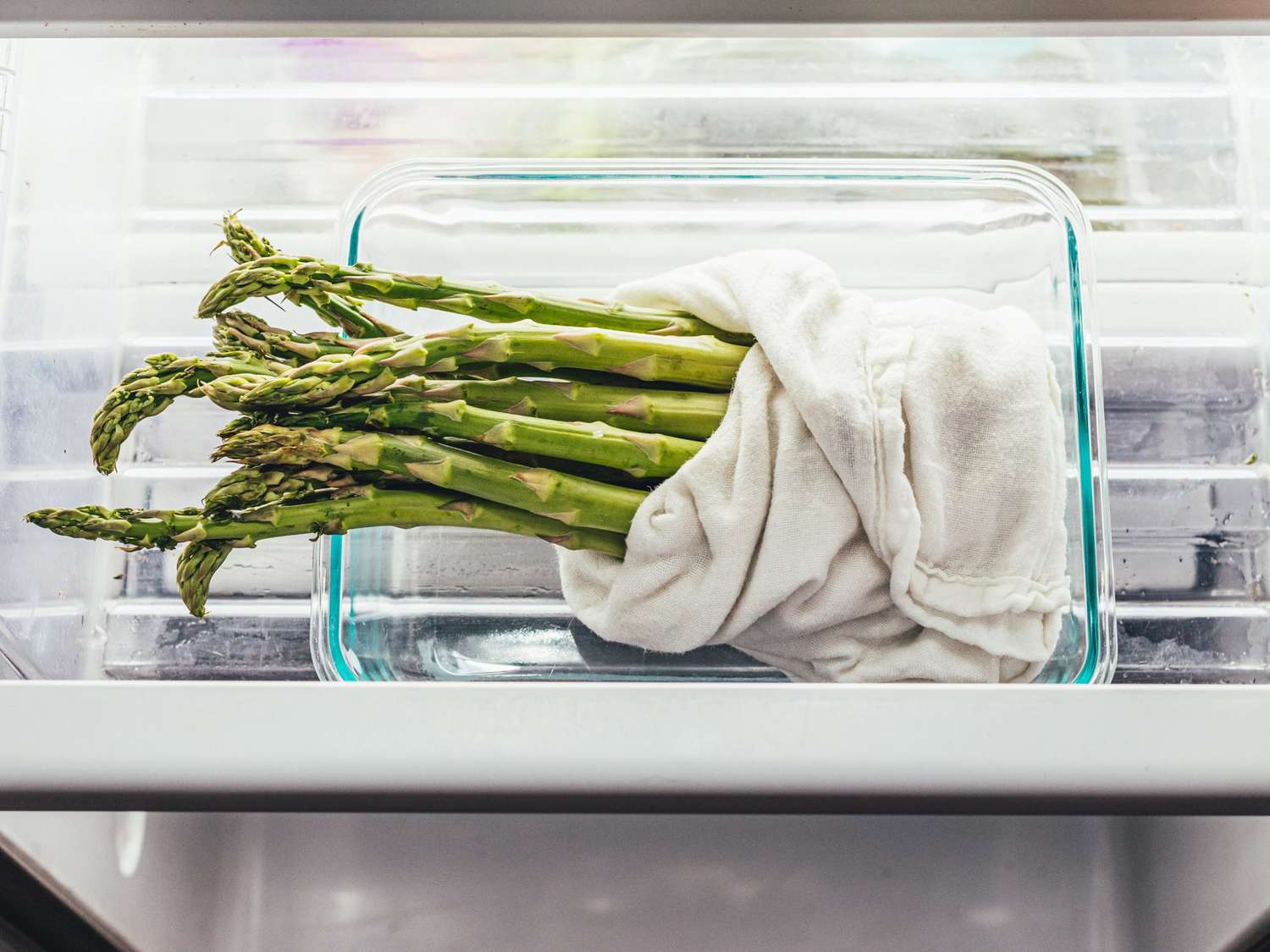
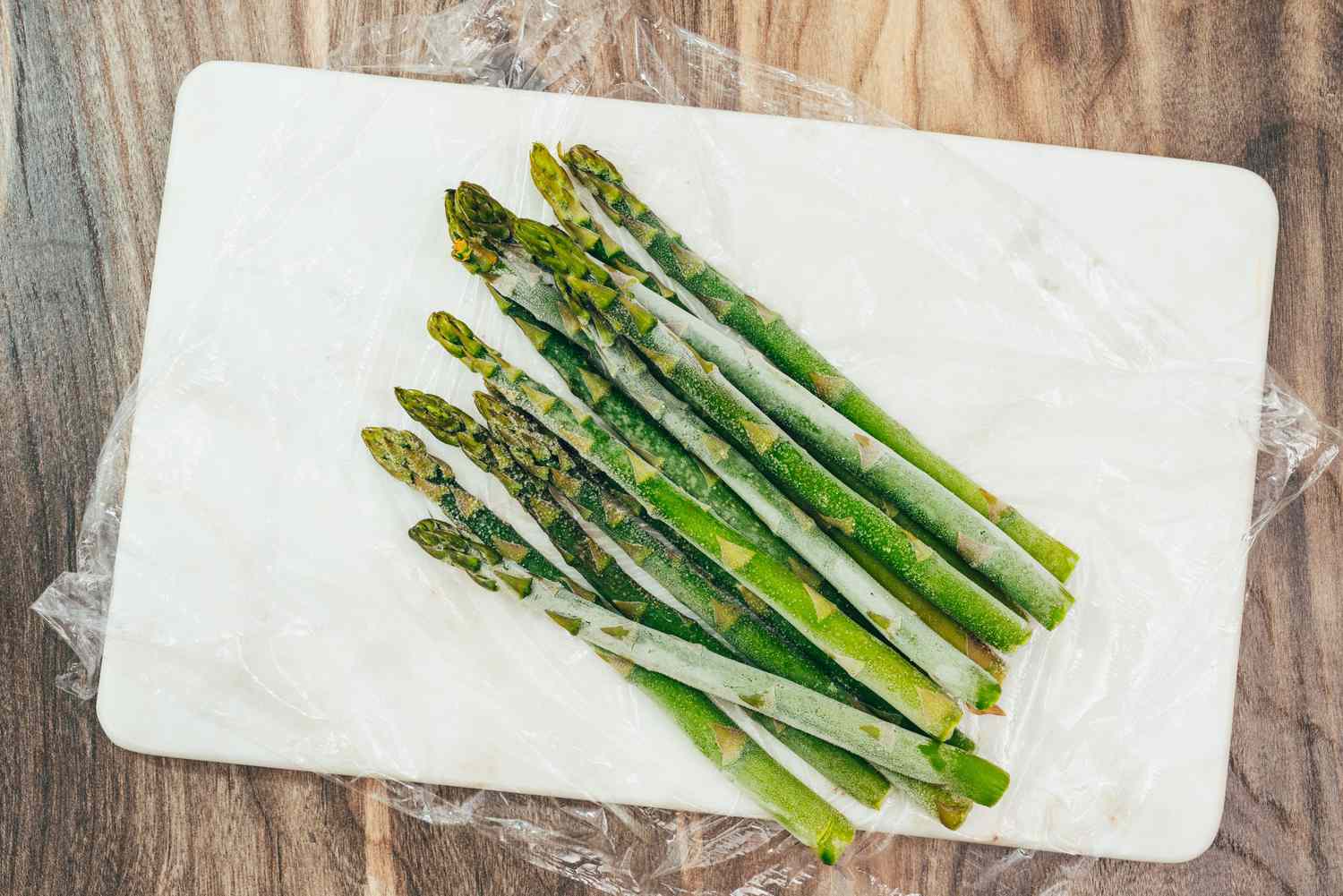


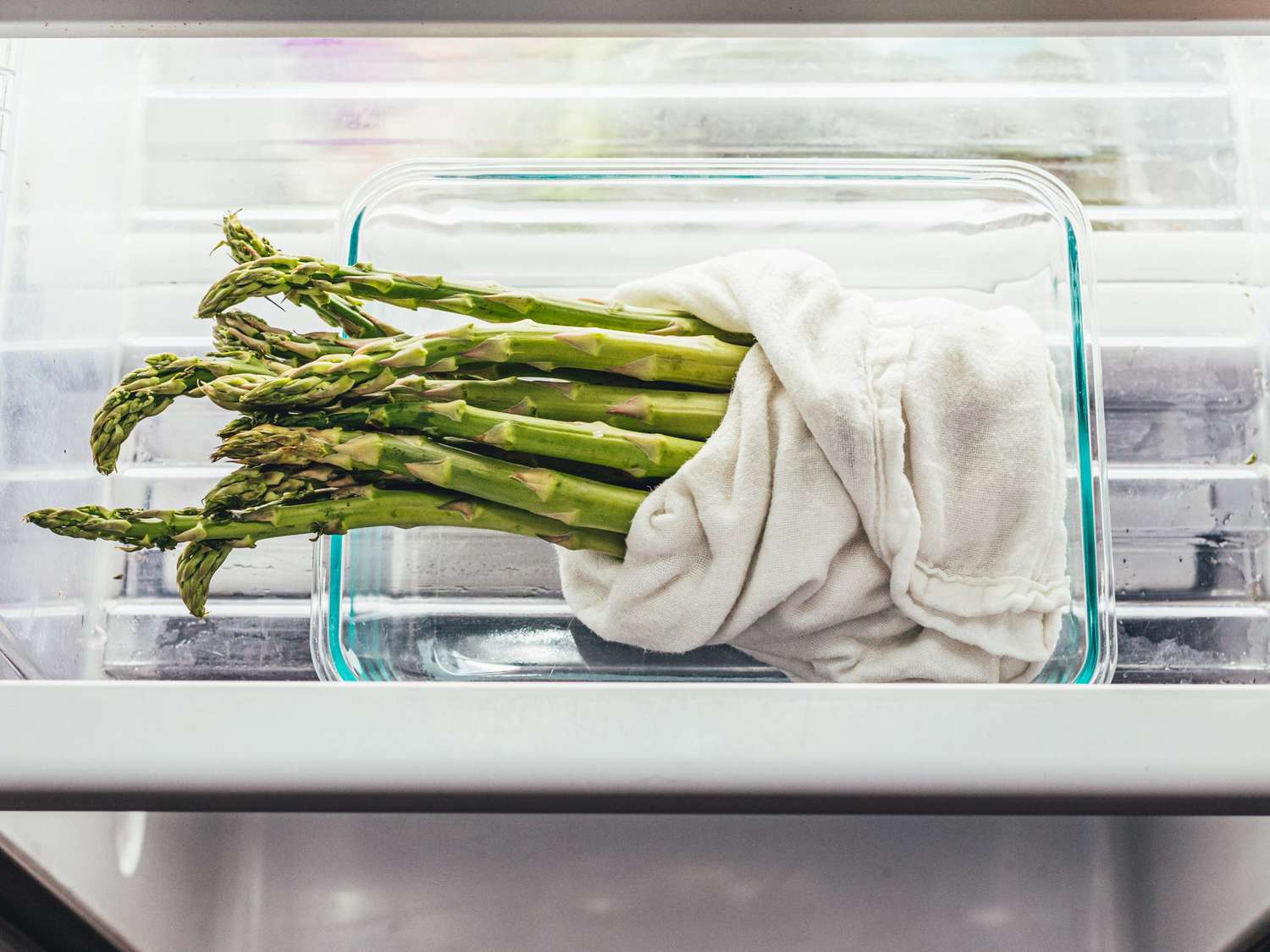
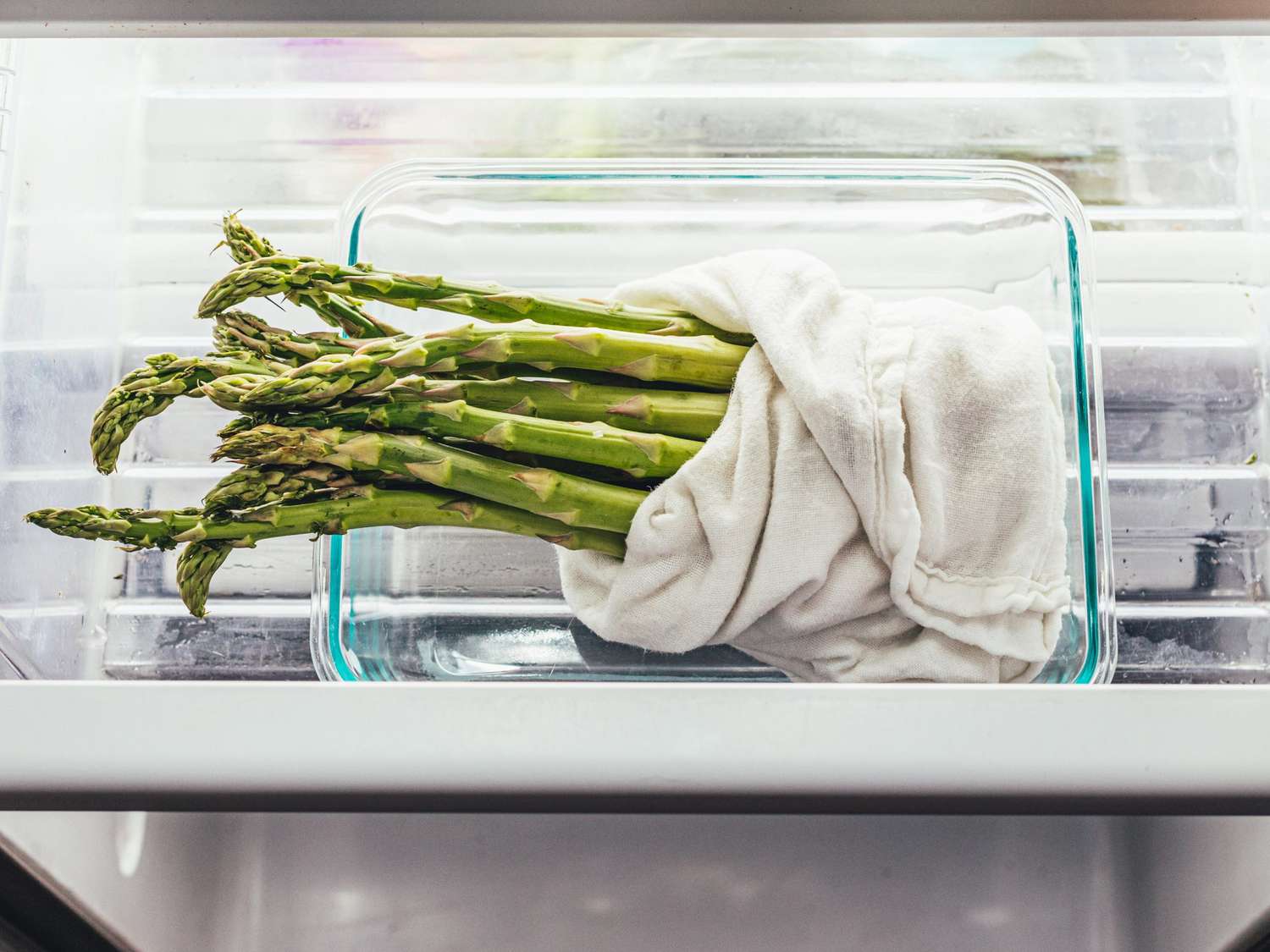
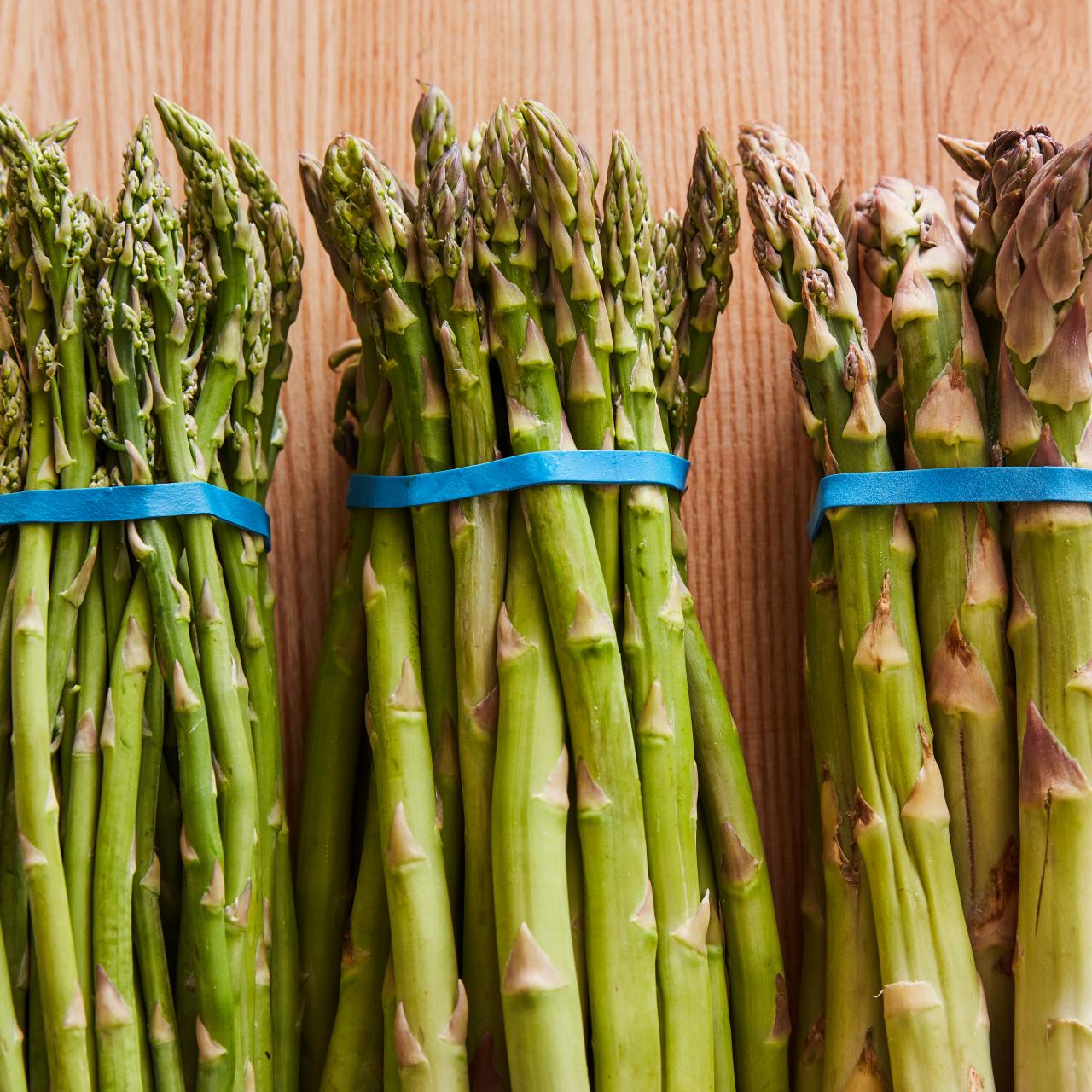

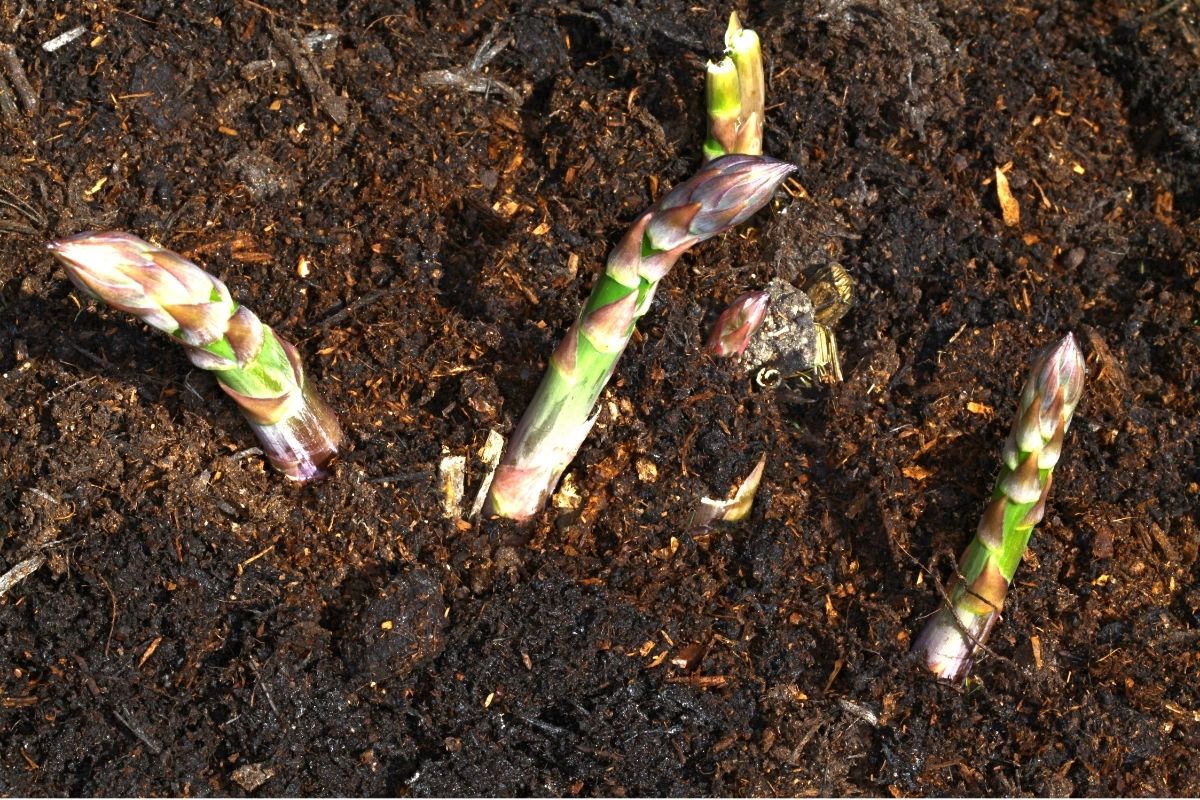
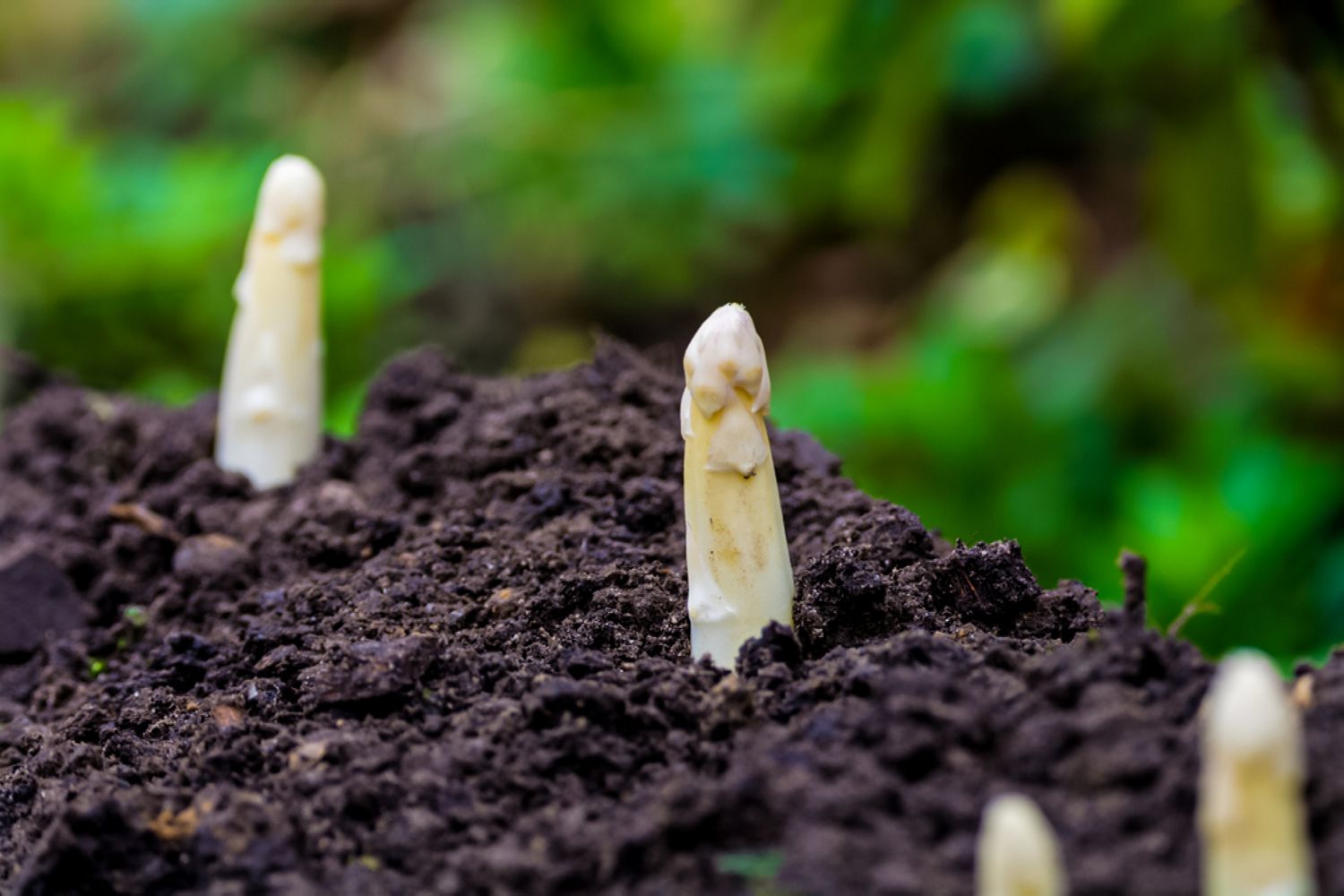

0 thoughts on “How To Store Asparagus”